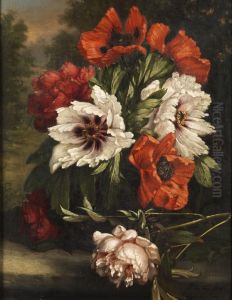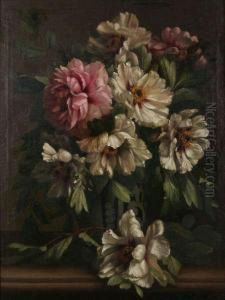P De Vos Paintings
Paul de Vos was a Flemish painter who is best known for his works on hunting scenes, animal subjects, and still life paintings during the Baroque period. Born in 1596 in Hulst, which is now part of the Netherlands, de Vos was closely associated with the artistic circle in Antwerp and became a prominent figure in the city's vibrant art scene. His brother, Cornelis de Vos, was also a notable artist, and they were both members of the Guild of St. Luke, an association of artists in the city.
Paul de Vos was a contemporary of Frans Snyders, who was another master of animal painting, and they often worked on projects together. De Vos' works were characterized by dynamic compositions and a keen eye for detail, particularly in rendering the fur and textures of animals. His paintings often depicted dramatic hunting scenes, showcasing the vigor and brutality of the hunt, as well as the nobility of the participating aristocrats. He also painted still lifes that included dead game and other objects that catered to the tastes of the wealthy merchant class in Antwerp.
Despite being less well-known than some of his contemporaries, such as Peter Paul Rubens and Anthony van Dyck, Paul de Vos enjoyed a successful career and his paintings were highly sought after by patrons throughout Europe. His works are now found in various museums and collections around the world, reflecting the enduring appreciation for his contribution to the Baroque movement. Paul de Vos passed away in 1678 in Antwerp, leaving behind a significant body of work that continues to be studied and admired by art historians and enthusiasts alike.

